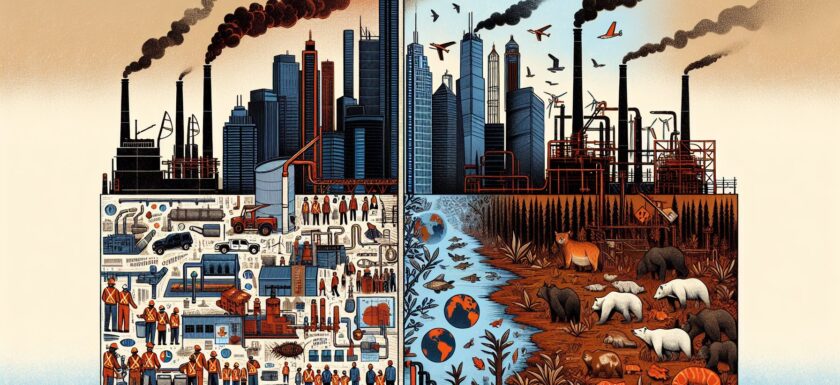The oil and gas industry in Canada has long been a subject of interest, both for its significant contribution to the country’s economy and the mounting environmental concerns associated with its operations. In this blog post, we will delve into the intricacies of this thriving industry, exploring its economic impact, environmental challenges, and the need for sustainable solutions.
Canada is known for its vast reserves of oil and gas, making it a major player in the global energy market. Alberta’s oil sands, located in the western province, are one of the world’s largest known oil reserves, accounting for a substantial portion of Canada’s oil production. The oil sands have played a pivotal role in boosting Canada’s economy, creating job opportunities, and attracting investments from around the globe.
However, the extraction of oil from the sands comes with its fair share of environmental concerns. The process, known as oil sands mining, involves clearing vast areas of boreal forest, consuming significant amounts of water, and emitting greenhouse gases. The scale of these operations has put a strain on the environment, raising concerns about habitat destruction and water pollution.
To mitigate the environmental impact, the Canadian government and industry players have been working to implement more sustainable practices. Technological advancements, such as steam-assisted gravity drainage (SAGD), have been introduced to reduce the carbon footprint associated with oil sands production. Additionally, efforts are being made to promote the reclamation of land disturbed by mining activities, aiming to restore the affected ecosystems.
Apart from oil sands, Canada also possesses significant reserves of conventional oil and gas, which are extracted through drilling. While the environmental impact of conventional extraction is comparably lower than that of oil sands mining, it is not without its challenges. Exploration and drilling activities have the potential to disturb environmentally sensitive areas and can result in accidental spills, endangering local ecosystems and wildlife.
Concerns surrounding hydraulic fracturing, commonly known as fracking, have also come to the fore in recent years. Fracking involves injecting water, sand, and chemicals at high pressure into underground rock formations to release natural gas. While it has led to increased natural gas production and has the potential to reduce greenhouse gas emissions when used as a substitute for coal, it has been a subject of debate due to the risk of groundwater contamination and seismic activity.
Addressing the environmental and economic challenges posed by the oil and gas industry requires a balanced approach that recognizes the importance of both energy security and sustainability. Canada has been actively investigating alternative sources of energy, such as renewables, and investing in research and development to enhance efficiency in the oil and gas sector.
Transitioning to a greener future will not happen overnight, but it is essential to continue driving innovation and adopting practices that reduce the industry’s impact on the environment. Collaborative efforts between the government, industry stakeholders, and environmental groups are vital to striking this delicate balance.
In conclusion, the oil and gas industry in Canada has played a significant role in driving economic growth, but it also presents substantial environmental challenges. As Canada grapples with finding sustainable solutions, it is crucial to develop and implement technologies that reduce greenhouse gas emissions, promote land reclamation, and protect sensitive ecosystems. By embracing innovation and fostering collaboration, Canada can pave the way towards a more sustainable future for its oil and gas industry, ensuring a prosperous and environmentally conscious nation.

